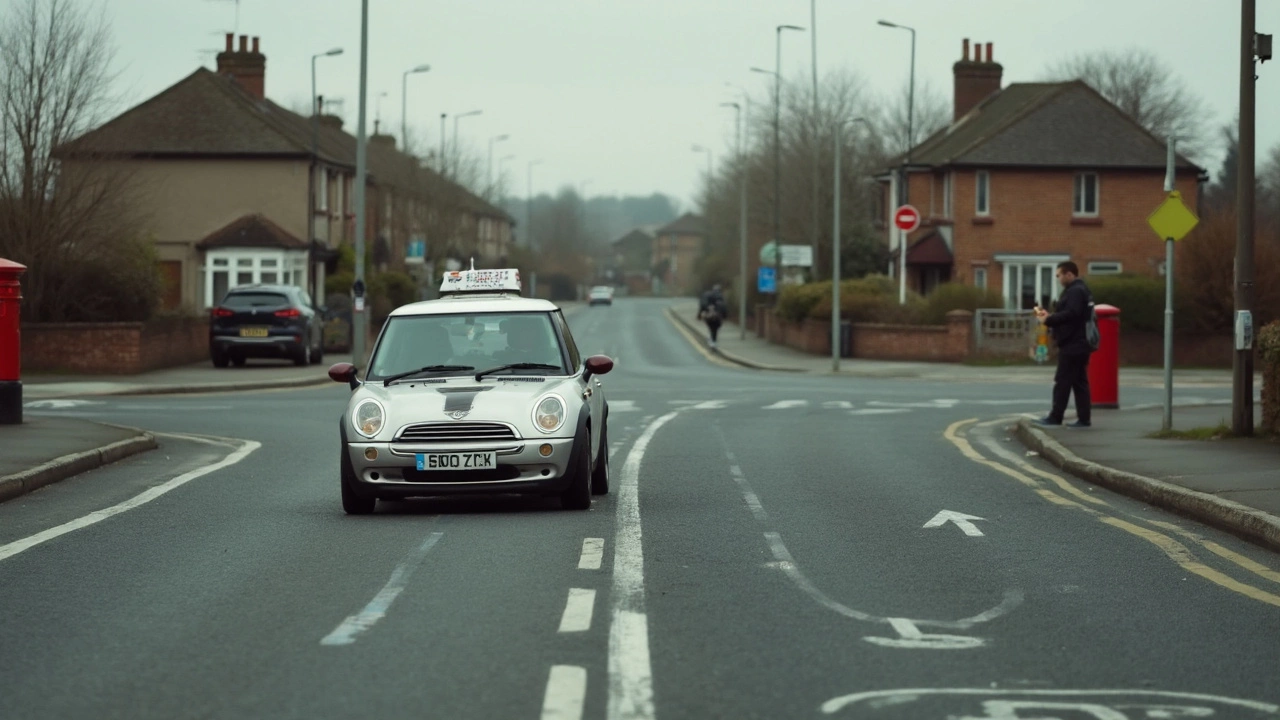Driving Mistakes: What Trips Up Learners and How to Fix Them
If you’ve ever felt the sting of a failed driving test, you know a single slip can ruin weeks of practice. The good news is most of those slips are avoidable. Below we break down the typical faults examiners spot, why they matter, and easy ways to keep them out of your record.
Common Faults on the Practical Test
Examiners watch for three main types of mistakes: observation errors, control errors, and positioning errors. Missing a blind‑spot check before a lane change is the most quoted observation fault. A quick glance over the shoulder can save you a ‘dangerous’ mark.
Control errors usually show up as harsh braking or jerky steering. Keep your foot light on the pedals and practice smooth inputs on a quiet road before test day. If you’re nervous, try the ‘push‑and‑release’ technique: press the accelerator just enough to feel the car move, then ease off.
Positioning errors happen when you’re too close to the curb or drift out of the lane. Use the side mirrors as a guide, but trust your own eye. When turning, imagine the car as a rectangle and aim to keep the whole shape inside the road lines.
Another frequent fault is failing to use correct signals. Turn signals aren’t just for show; they give other road users time to react. Make it a habit to signal at least three seconds before you move.
Everyday Driving Errors and How to Avoid Them
Even after you pass, the same mistakes can creep back in. Speeding is the biggest cause of real‑world accidents. Set your cruise control a few miles below the limit on highways; it forces you to stay consistent.
Tailgating is another risky habit. Keep a two‑second gap in dry weather and add an extra second when it’s wet. If you’re not sure how far that is, pick a fixed point like a road sign, and count “one‑million‑two” as you pass it.
Distractions off the road cost more lives than any single driving skill. Put your phone on silent and out of reach while you’re moving. If you need directions, program them before you set off.
Lastly, don’t forget the basics of vehicle checks. A quick tyre pressure check and a glance at the lights each morning can stop a breakdown before it happens.
By focusing on these simple habits, you’ll cut down the chance of a test fail and become a safer driver on the everyday road. Remember, the goal isn’t just to pass the exam – it’s to stay in control for every mile you drive.
- May 5 2025
- 0 Comments
- Rowan Cavendish
Can You Fail Your Test for Being in the Wrong Lane?
Messing up your lane during a driving test can be a big deal, and it’s one of the top reasons people fail. This article breaks down what examiners look for when it comes to lane choices, how a simple mistake can cost you a pass, and what you can do if you drift or end up in the wrong lane. Expect real examples, warning signs you might get it wrong, plus simple tricks to avoid slipping up on test day.
- February 26 2025
- 0 Comments
- Rowan Cavendish
Major Faults in a Driving Test: Key Things to Avoid
Understanding major faults in a driving test can make the difference between passing and failing. A major fault indicates a serious mistake that poses a threat to safety. Avoiding these mistakes requires focus and preparation. This article dives into common errors and provides tips on how to steer clear of them during your test.
- February 19 2025
- 0 Comments
- Rowan Cavendish
Is Hitting the Curb a Fail in Your Driving Test?
Wondering if hitting the curb means automatic failure on your driving test? Learn what different regions say about this common mistake. Find useful tips to prevent curb-hitting, understand its impact on your test score, and discover how to practice for a smoother ride. Prepare better by knowing what really counts on your big day.
- Driving Lessons (41)
- Driving Test Tips (33)
- HGV Training (31)
- Driving Test Booking (27)
- Driving Licence Renewal (24)
- Driving Theory Test (21)
- Intensive Driving Course (16)
- Pass Plus Course (15)
- Driving Tips (15)
- Driver Licensing (14)
Categories
- January 2026 (4)
- December 2025 (15)
- November 2025 (13)
- October 2025 (21)
- September 2025 (5)
- August 2025 (8)
- July 2025 (30)
- June 2025 (30)
- May 2025 (30)
- April 2025 (31)
- March 2025 (30)
- February 2025 (28)
Archives
- driving lessons
- driving test
- driving tips
- intensive driving course
- driving test tips
- HGV training
- learn to drive
- driving theory test
- driver training
- driving test booking
- pass driving test
- HGV driving
- road safety
- driving license renewal
- Virginia driving test
- learner drivers
- safe driving
- Virginia driver's license
- driving license
- learning to drive



